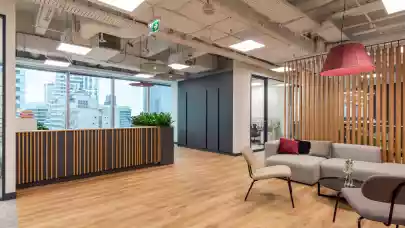
According to the latest Savills report, the supply of modern office space in Poland's eight largest regional cities reached 6.73 million sqm. While the market shows signs of stabilisation, new supply has slowed significantly. Between January and September, only 18,000 sqm of office space was delivered - 76% less than in the same period of 2024.
Development activity in regional cities remains low. Approximately 192,000 sqm is under construction, representing an 11% year-on-year decline and a result well below the 2020-2024 average of over 520,000 sqm. Most investments are being carried out in Kraków (55,400 sqm) and Poznań (49,600 sqm).
Total leasing volume from January to the end of September reached 521,800 sqm, marking a 6% increase compared to the same period last year. The highest activity was recorded in Kraków (203,900 sqm), Wrocław (107,400 sqm) and the Tri-City area (71,700 sqm). Demand structure analysis shows that IT companies generated the most activity at 20%, accounting for 105,000 sqm of leasing. Business service centres and manufacturing companies each represented 16% of demand.
Despite strong tenant interest, vacancy levels have increased to an average of 17.7% (up 40 basis points year-on-year). The lowest vacancy rates are in Szczecin (6.8%) and Lublin (10.3%), while the highest are in Wrocław (21.8%) and Katowice (23.4%). "Regional office markets are currently going through a phase of adaptation to the new economic reality. The continued interest in contract renegotiations indicates that tenants are trying to optimise their space leasing strategies while maintaining flexibility," comments Jarosław Pilch, Head of Tenant Representation at Savills.
Prime rents for Class A offices remain relatively stable, ranging from €11.50 to €17.00 per sqm per month. The highest rates for premium projects are in Poznań and Kraków (€17), while the lowest are in Lublin (€14.50). "Market dynamics largely depend on macroeconomic stability and the availability of investment financing. Over the next two years, we expect developer activity to remain at a similar level to the current one," notes Daniel Czarnecki, Head of Landlord Representation at Savills.




